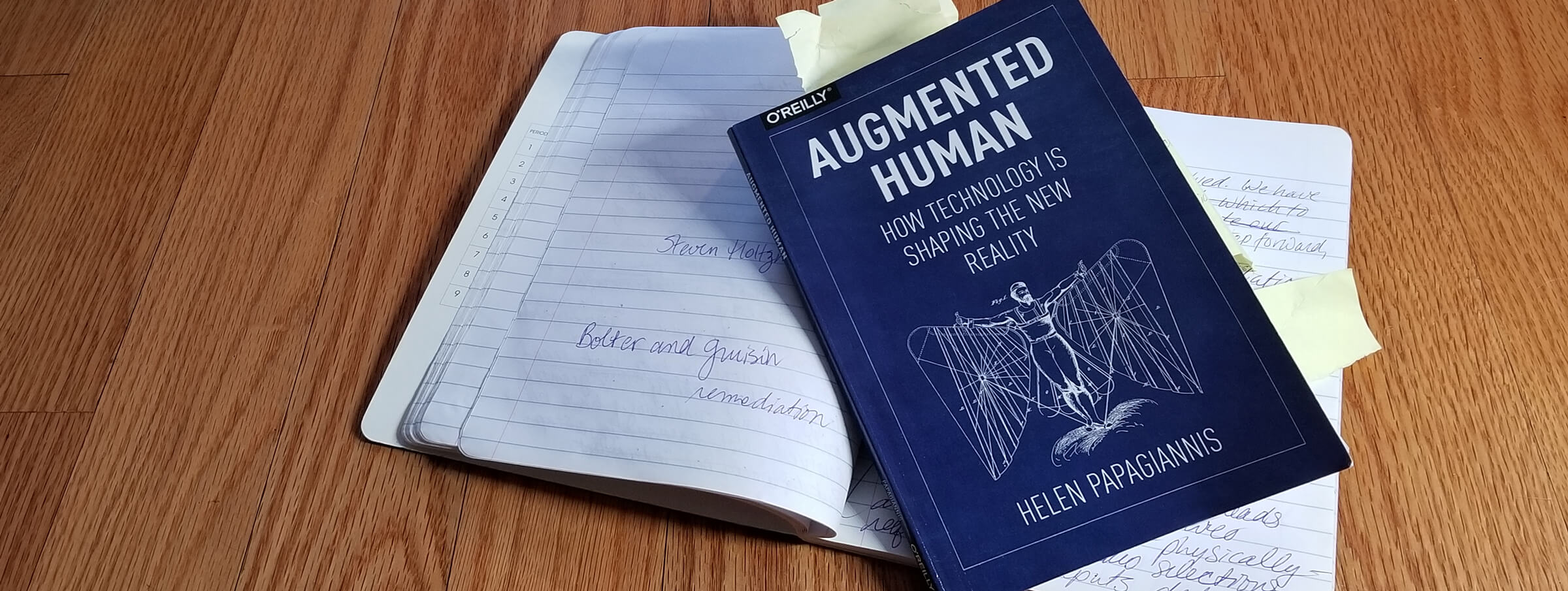Many thanks to Helen Papagiannis and O’Reilly for a fantastic reference book on Augmented Reality. I appreciate how carefully balanced and complete Augmented Human is, covering all of the senses (Visual, aural, haptic—even taste and smell) with equal respect. There’s important consideration of context here, which deserves serious attention. But I was looking to answer, or validate my own answer, to this question:
What is needed from creatives like me as we develop XR technology?
Because it’s new and novel, we tend to focus on the technology which is intriguing. Is it true that the message is more important? Yes I suppose so. To me, they are co-dependant.
This is also true of VR (let’s call it all “XR”):
“There will be many new degrees of freedom…and alternative realities that change even the physics of experience.”
—Tom Furness 2017
Film was this kind of paradigm shift, wasn’t it? The big screen was more immersive, in many ways, than theatre, or books. Especially when it was new. As film developed it became less like theatre and books, with focal shifts, POV changes, transitions, filters, and special effects. Acting has become more natural, with stories more unique to the medium; less like plays or books. Now we take that technology, that reality—and its musical soundtrack—for granted. Video in a variety of media is deeply integrated in our daily lives. Content and technology have both evolved. It’s hard to tell sometimes, but media in general has evolved.
For every step forward, we take a step back.
“The challenge of remediation is that when media is new it typically replicates the qualities of the prior medium. The danger of this is that the new medium focuses on the characteristics of the older medium rather than focusing on what is really new.”
At Samsung 837, remediation was evident in a trailer for Mission Impossible. Where I should have felt terrified, or at least excited, to narrowly miss rocky cliff walls in small aircraft, all I saw and felt was a grainy blur. I’m sure that sequence in the feature film in a theatre, with its high image quality, was much more impressive.
Breaking away from the rectangular screen is significant.
In cinema, 3D effects have come a long way in simulating the “physics” we experience in the “real world”. XR presents opportunities to go a step further.
“We’re not limited to re-creating reality; why not use AR to present something that is physically impossible to experience in reality?”
The adorable dinosaur I wrote about in my previous blog demonstrated this. Not just that the fictional character was believable. More importantly, the spatial experience was extraordinary. Speed variations and spatial relationships were delightful, exhilarating. Fun, like driving a sports car. I’d been looking for this in XR ever since the MindYolk team created Paul Lipsky’s 3D shipyard tour. I rarely find it.
“AR as a magical experience reminds us that we need not strive to perfectly recreate reality with AR. It allows our imagination to roam and experiment creatively without the rules of the real world always applying.”
So this is what creatives must to bring to the XR table.
A brand new experience of “physics,” where novel physiological effects occur in the mind and body of the viewer. Beyond humor, suspense and understanding. Surprise, exhilaration, and the wonder of discovery in visual, aural and tactile adventures that feel entirely new.
“As channels, conduits and translators, [artists] help us to see the world with new eyes. The role of an artist is to observe, empathize and to reflect those things back to the world, presenting another way of being, feeling, hearing and seeing…this is the definition of innovation, and another reason to seek out artistic exploration in AR.”
“Now is the time to dream, design and build our wondrous future.”

